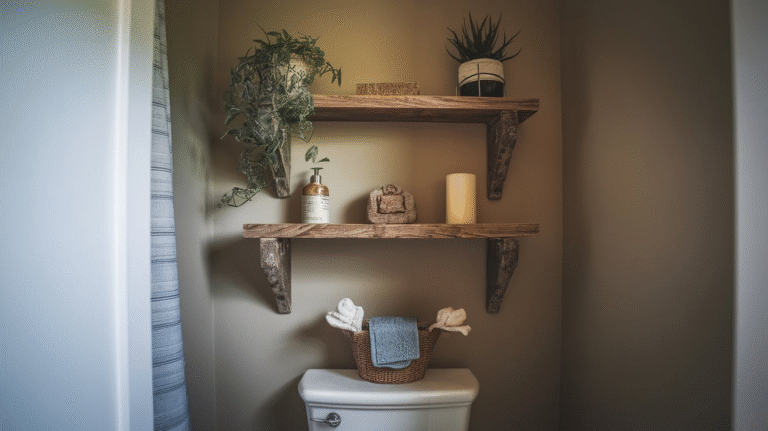19 Kitchen Plants Ideas That Will Brighten Your Space and Boost Your Cooking
When you walk into your kitchen, what do you see? Stainless steel appliances, maybe a stack of dishes waiting for attention, and a countertop that could use some personality.
Now imagine that same space with bursts of green leaves, fragrant herbs, and even small fruiting plants within arm’s reach.
Suddenly, your kitchen isn’t just a place to cook—it’s alive, it’s practical, and it feels good.
1. Basil – The King of Kitchen Herbs
Let’s start with basil, the undisputed king of kitchen herbs.
This leafy green is not just for pesto; it’s a versatile flavor booster for pasta, soups, salads, and even cocktails.
Basil thrives in warm, sunny conditions. A sunny windowsill with at least 6 hours of direct sunlight is perfect.
The trick is to keep the soil moist but not waterlogged. Basil is notorious for wilting dramatically the moment it’s thirsty (think of it as the drama queen of herbs.
2. Mint – A Fresh Breeze for Your Kitchen
Mint is like that friend who always shows up with good energy.
It spreads quickly, smells refreshing, and makes everything taste brighter. From iced tea to Mojitos, mint is always welcome.
Here’s a tip: grow mint in its own pot because it’s a little greedy and will spread aggressively if given a chance.
Place it in indirect sunlight and water consistently. Mint also has cooling properties; in fact, studies show that menthol in mint can help reduce headaches and improve digestion.
A personal hack? I keep a mint pot next to my sink. Every time I rinse vegetables, I pluck a leaf, crush it between my fingers, and inhale the aroma. It’s like a natural stress reliever after a long day.
3. Rosemary – The Memory Herb
Rosemary is not just a kitchen staple but also a symbol of remembrance.
Science backs it up too: research suggests that the aroma of rosemary can improve concentration and memory by up to 75%.
Rosemary prefers bright light and drier soil, so don’t drown it. Think of rosemary as the cactus of herbs—it likes attention, but not too much.
Add it to roasted potatoes, chicken, or even infused oils, and you’ll never look back.
4. Parsley – More Than a Garnish
Parsley has gotten an unfair reputation as a plate decoration, but it’s actually a nutrient powerhouse.
Just two tablespoons of parsley provide more vitamin C than a small orange slice.
Flat-leaf parsley is best for cooking, while curly parsley adds texture to salads and garnishes.
Place your parsley pot in bright, indirect light and snip regularly to encourage growth.
Personal anecdote: growing parsley on my counter completely changed how I seasoned soups.
Suddenly, every dish had this subtle, peppery freshness that dried parsley from a jar just couldn’t replicate.
5. Thyme – Small but Mighty
Thyme is a low-maintenance, hardy herb that fits perfectly in tiny pots. It loves sunlight and doesn’t mind a bit of dryness.
With thyme, less is more—its tiny leaves pack intense flavor, especially in Mediterranean and French cooking.
Fun fact: Thyme has natural antimicrobial properties. Historically, it was used to preserve meat before refrigeration.
So not only does thyme taste great, but it’s also a little food-safety superhero.
6. Chives – The Onion’s Kinder Cousin
If onions had a mellow cousin who always got along with everyone, it would be chives.
They’re mild, oniony, and super easy to grow indoors.
Chives grow well in bright light, and you can snip them regularly without harming the plant.
A single pot of chives can keep producing for months. Add them to scrambled eggs, mashed potatoes, or homemade butter spreads—you’ll never look at onions the same way again.
7. Cilantro – Love It or Hate It
Cilantro is controversial—some people taste soap, others taste heaven.
But if you’re in the “love it” camp, having cilantro on your kitchen windowsill is a game-changer.
It grows best in cooler temperatures and needs lots of water. Unlike basil or rosemary, cilantro has a short lifespan, so plant seeds every few weeks to keep a steady supply.
Nutritionally, cilantro contains antioxidants that may help detoxify heavy metals from the body.
So, if you enjoy tacos with a cilantro sprinkle, you’re also giving your health a small bonus.
8. Aloe Vera – The Kitchen First Aid Kit
Aloe vera isn’t for flavoring your pasta, but it earns a spot in the kitchen for its medicinal benefits.
Got a minor burn from touching a hot pan? Snap a leaf and apply the gel for instant relief.
Aloe thrives in indirect light and needs little water. It’s practically indestructible, making it perfect for those who forget to water plants.
On top of that, aloe has air-purifying qualities, helping reduce indoor pollutants.
9. Oregano – The Pizza Herb
Oregano is synonymous with pizza and Italian cooking.
Fresh oregano has a deeper, more aromatic flavor than the dried flakes you shake from a jar.
It prefers full sun and moderate watering. Once it takes off, oregano grows vigorously, and you’ll have more leaves than you know what to do with.
Plus, it’s packed with antioxidants that rival blueberries in concentration. Yes, your pizza topping might be healthier than you think.
10. Lemongrass – Zest in a Pot
Lemongrass adds a citrusy punch to soups, curries, and teas.
It’s tall, elegant, and surprisingly easy to grow indoors if you give it enough sunlight.
Pro tip: buy fresh lemongrass stalks from the store, place them in water until roots appear, then transfer them to soil.
You’ll not only save money but also feel like a plant wizard when it starts thriving.
11. Sage – Earthy and Elegant
Sage has a strong, earthy flavor that’s perfect for stuffing, meats, and even teas.
It’s also used in traditional medicine for its anti-inflammatory and antimicrobial benefits.
Sage loves sunlight and well-drained soil. Keep it in a sunny spot, and you’ll have leaves ready whenever your recipe calls for a little wisdom (sage is literally associated with wisdom—how fitting).
12. Ginger – The Root with a Kick
Growing ginger indoors is surprisingly easy. All you need is a ginger root with “eyes” (buds).
Plant it in a wide pot, keep the soil moist, and watch shoots emerge.
Ginger is a kitchen multitasker: add it to stir-fries, teas, soups, or even cookies.
It also has proven health benefits, from reducing nausea to easing inflammation.
Imagine telling guests that the ginger in their tea came straight from your kitchen pot. That’s bragging rights.
13. Green Onions – The Regrow Champion
Here’s the easiest kitchen plant ever: green onions. Just take leftover roots from the bunch you bought, place them in a glass of water, and watch them regrow within days.
No soil, no fancy setup—just water and sunlight. You’ll have a near-endless supply of green onions for garnishes, omelets, or fried rice.
According to the USDA, green onions are rich in vitamins A, C, and K, making them both practical and healthy.
14. Bay Laurel – The Secret Flavor Layer
Bay leaves add depth to soups, stews, and sauces, but buying them dried means missing out on their full flavor.
A bay laurel plant in your kitchen ensures a fresh supply of leaves whenever you need them.
Bay laurel prefers bright, indirect light and moderate watering. The leaves can be harvested year-round, and one plant is usually enough for a household. Think of it as your secret weapon for flavor complexity.
15. Tarragon – The French Touch
Tarragon is essential in French cuisine, especially for béarnaise sauce and chicken dishes.
It has a licorice-like flavor that’s hard to substitute.
Growing tarragon indoors requires bright light and regular pruning. It’s not as common as basil or parsley, which makes it a special addition to your kitchen garden.
Plus, it’s believed to aid digestion and improve appetite—no wonder French chefs adore it.
16. Lavender – A Touch of Calm
Lavender might not be the first plant you think of for a kitchen, but its calming scent and versatility make it worth considering.
Use dried lavender in teas, baked goods, or even to infuse sugar.
Lavender needs lots of sunlight and well-drained soil. Bonus: it’s known for reducing stress and improving sleep quality.
A whiff of lavender while you’re cooking can instantly lift your mood.
17. Microgreens – Tiny but Nutrient-Dense
Microgreens are basically baby plants harvested when they’re only a few inches tall.
Don’t let their size fool you—they can contain up to 40 times more nutrients than mature greens according to USDA research.
They’re ridiculously easy to grow indoors. Sprinkle seeds in a shallow tray, keep the soil moist, and harvest within 2–3 weeks.
Use them on sandwiches, salads, or soups for a burst of color and nutrition.
18. Strawberry Plants – Sweet Rewards
Yes, you can grow strawberries indoors. They’ll need lots of sunlight (or a grow light) and some patience, but the payoff is sweet.
Strawberries are rich in vitamin C and antioxidants, and having them in your kitchen means fresh fruit within arm’s reach.
Plus, the sight of small red berries among green leaves adds cheer to any space.
19. Chili Peppers – Heat at Your Fingertips
For spice lovers, chili peppers are the ultimate kitchen plant. They grow well in pots, need bright light, and reward you with fiery fruits that can elevate any dish.
Chilies also boost metabolism thanks to capsaicin, the compound that gives them heat.
From salsas to curries, your homegrown peppers will add personality (and maybe a little sweat) to your meals.
Conclusion
Adding plants to your kitchen isn’t just about looks—it’s about creating a living, breathing pantry at your fingertips.
With herbs like basil, rosemary, and cilantro, you elevate your cooking instantly. With functional plants like aloe and ginger, you blend wellness with convenience.
And with fun additions like strawberries and chili peppers, you turn your kitchen into a mini food adventure.





